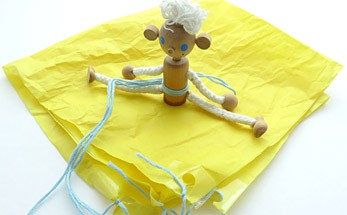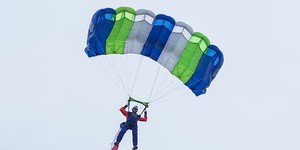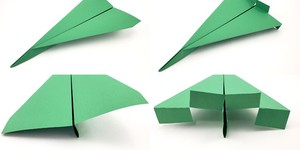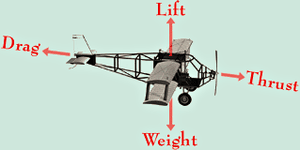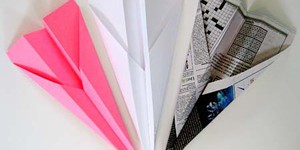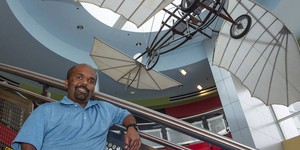Summary
Introduction
Have you ever wondered what a parachute and an open rain jacket have in common? They both trap air and slow you down when you move fast! In this activity, you design a parachute for a miniature action figure. Tissue paper or a plastic bag and a few strings is all it takes to make your figure into an expert skydiver.
Materials
- Tissue paper or a plastic bag
- Scissors
- Ruler
- Tape
- Hole puncher
- Twine
- Small non-breakable action figure or miniature doll that may be dropped on the floor. If you do not have an action figure, use a piece of clay, a small wooden block, a measuring spoon, etc.
- Location to drop your parachute from, e.g. a 2nd floor window, balcony, open staircase.
-
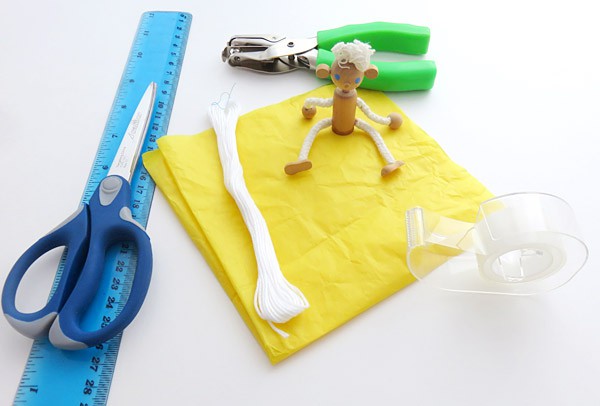 Image Credit: Sabine De Brabandere, Science Buddies / Science Buddies
Image Credit: Sabine De Brabandere, Science Buddies / Science Buddies
Prep Work
- To make the canopy for the parachute, cut a 30 cm by 30 cm square (12 by 12 inches) out of the tissue paper (or plastic bag), reinforce the corners with tape and punch a hole in each corner.
- Create suspension lines by cutting four strings from the twine, each 30 cm (12 inches) long.
- To assemble your parachute, attach one end of each suspension line to each corner of the tissue paper, fold the canopy in four so its corners lay on top of each other, and knot the unattached ends of the four suspension lines together.
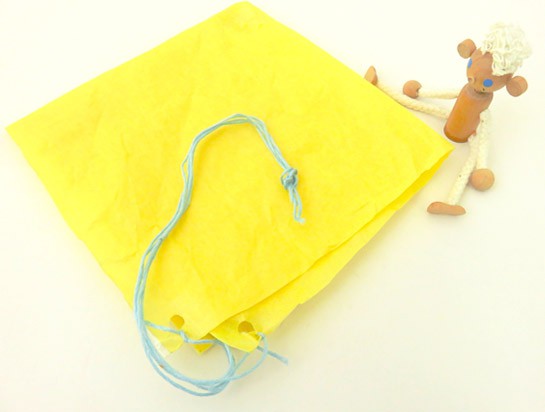 Image Credit: Sabine De Brabandere, Science Buddies / Science Buddies
Image Credit: Sabine De Brabandere, Science Buddies / Science Buddies
Instructions
- Bring your parachute and action figure to your test location.In a moment, you will drop your figure (without the parachute) from this spot. Do you think it will make a soft or hard landing? Can you predict with precision where it will land?
- Drop your figure from the same location several times to see if your predictions were correct.
- Attach the parachute to your figure by winding the knotted end of the suspension lines around the middle of your figure and securing it with a knot or tape.In a moment, you will drop your figure equipped with a parachute from this spot. How do you think it will land this time? Can you also predict where it will land?
- Fold your canopy in four so its four corners lay on top of each other. Make sure the suspension lines are not tangled. Pick the parachute up from the corner diagonally opposite the corner with the strings. You figure should now hang under the parachute.
- Drop your figure equipped with parachute several more times from the same location.How are these falls different from the falls without a parachute? Why would a parachute create these differences?
- Fold your parachute in four so the corners are stacked. Cut the tip of the corner that is diagonally opposite the corner with the strings attached.
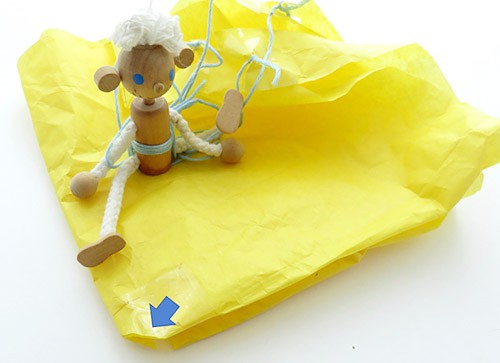 Image Credit: Sabine De Brabandere, Science Buddies / Science Buddies
Image Credit: Sabine De Brabandere, Science Buddies / Science Buddies
- Open your parachute and see that there is now a hole in the middle of the canopy.How do you predict this hole in the middle of the parachute will affect the fall?
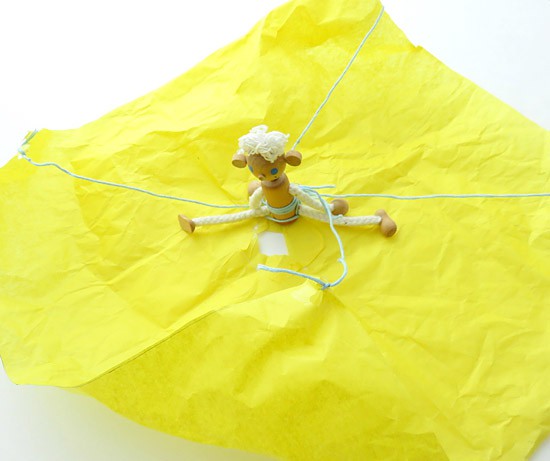 Image Credit: Sabine De Brabandere, Science Buddies / Science Buddies
Image Credit: Sabine De Brabandere, Science Buddies / Science Buddies
- Fold your canopy in four again. Pick it up at the corner that has been cut away and drop your figure several times from the same location.How did the hole change the way the figure falls? Why would this happen?
What Happened?
Your figure probably fell straight down and had a hard landing at first. The figure equipped with a parachute probably had a softer landing, but it was probably also harder to predict where exactly it would land. The figure equipped with the parachute with the hole in the middle probably still had a pretty soft landing. All of this is expected.
Gravity pulls objects straight down towards the center of Earth. It is strong enough to make falling objects move quickly, creating hard landings! Luckily, we have a layer of air around Earth which slows falls. Parachutes catch a lot of air creating a lot of drag, a push that opposes the movement of the parachute. It can drastically slow a fall, allowing a softer landing. However, this slow fall can be hard to control. A figure landing with a parachute might sway to the side during the fall.
Some parachutes trap air, just like a loose jacket can trap air on a bike ride. This trapped air wants to escape. Often, it can only escape at the edges which makes those edges (canopy edges or the sides of your jacket) flap. Some parachutes have a hole in the center to release air in a controlled way. It makes the chute more stable, with only a minimal change in drag.
Digging Deeper
Things fall because gravity pulls them down, and the faster they fall, the harder they land. A lot of people think that heavier objects fall faster. Galileo—a 16th century philosopher and scientist—showed that this idea, though intuitive, is wrong. You can test this idea too. Use a small square of cardboard (e.g. 2 by 2 inches) and a larger square of paper (e.g. 4 by 4 inches) folded to the same size (e.g. fold it in four). Drop both simultaneously from the same height and observe that though they are different weights, they reach the ground at the same time. Repeating this with the paper unfolded, and then again with the paper folded in eight or sixteen. This will illustrate why parachutes work. The lighter paper falls faster when it is folded into a smaller piece and slower when it is unfolded. The explanation is in the air.
The air around us is made of small particles. Just like you move water particles out of the way when you move through water, you move air particles out of the way when you move through air. Maybe you have felt how you pushed air out of the way on a bike ride. As you push the air, the air pushes you. It slides by you and feels like wind. It is called air resistance or drag, and it slows you down. You might not like air resistance when you are on your bike, but it is ideal when it comes to slowing down a fall! The heavier cardboard fell slower than the lighter paper folded multiple times because its larger flat surface needed to push more air away. It experienced more drag. The canopy of a parachute—when unfolded—has large surfaces. It creates a lot of drag slowing the fall down.
Ask an Expert
For Further Exploration
- Use a timer to measure how long each fall takes. Can you calculate the average speed of your figure during the fall? Which parachute creates the slowest fall?
- Make canopies of different materials, different sizes, and different shapes. Which ones work best?
- Find out how many holes you can create before your parachute no longer functions, or whether or not the location of the hole makes a difference. You could also gradually increase the size of the hole and study how its performance changes.
- Measure the impact of the fall by letting your figure land in a sandbox. How deep is the indent created by the fall?


